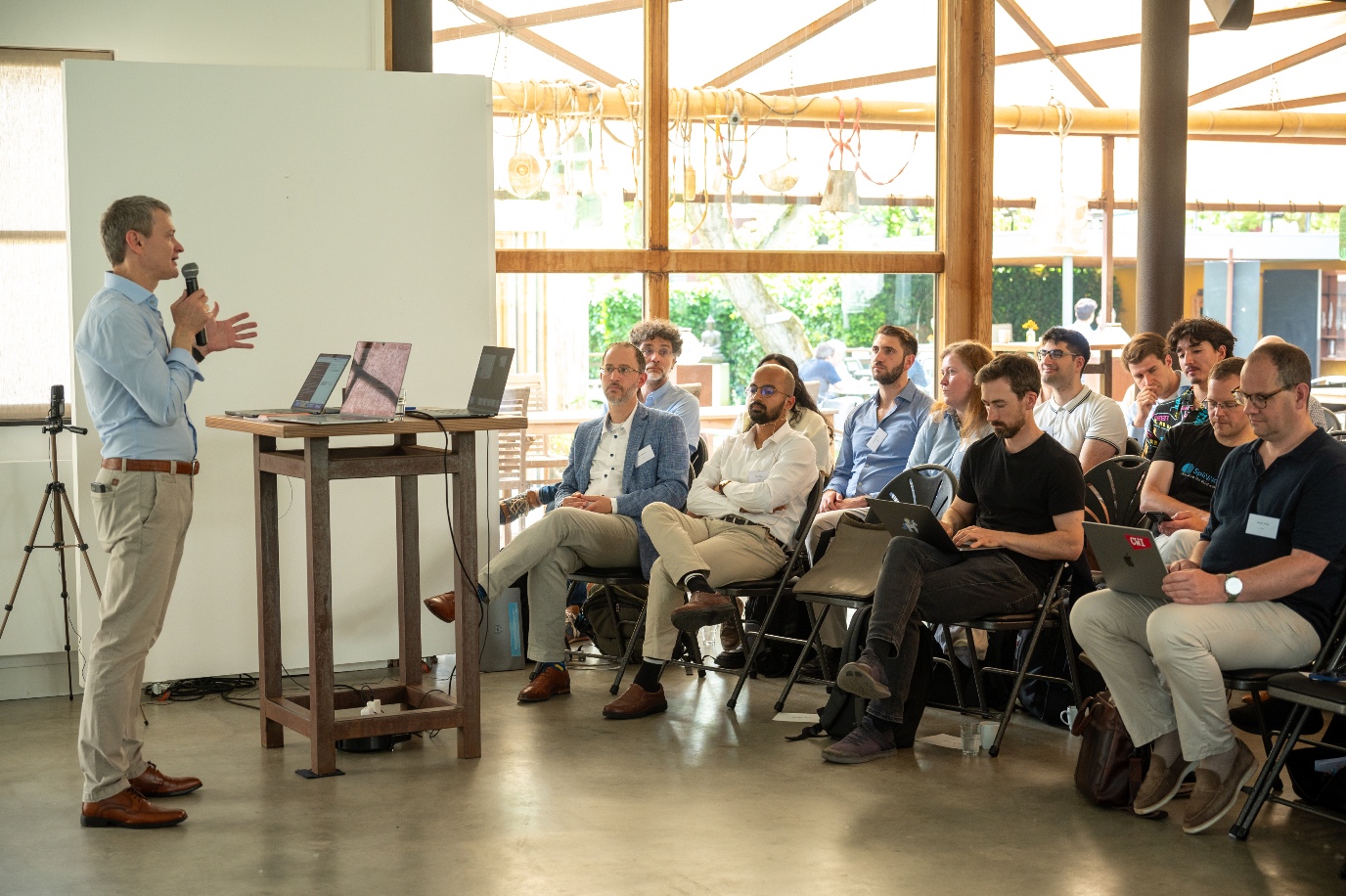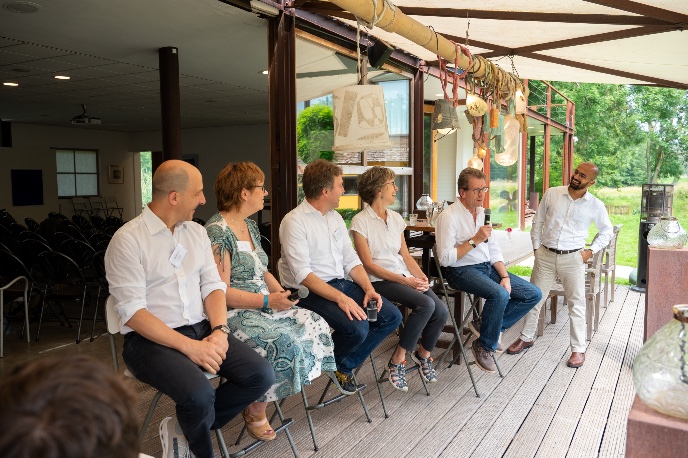Neuromorphic Now 2025: From Vision to Impact
The Neuromorphic Now conference returned for its second edition on 13 June 2025, bringing together 110 researchers, innovators, and policymakers in Delft. Organised by TNO, CWI, TU Delft, and CogniGron, the event aimed to accelerate the neuromorphic computing innovation agenda. Building on the success of the inaugural 2024 meeting (co-organised by IMEC), this year’s edition focused on uniting academia and industry, strengthening networks at Dutch, European, and global levels, and laying the groundwork for government and top sector involvement.

The day opened with Sagar Dolas (SURF) highlighting the importance of open knowledge exchange in a sustainable setting. In his keynote “Neuromorphic Computing: From Hype to Reality”, Prof. André van Schaik introduced DeepSouth, the Australian supercomputer designed for neuromorphic workloads, and called for pragmatic, scalable approaches. He emphasised the need for user-friendly software, open collaboration, and grounded ambition to move the field forward.
Throughout the day, examples from Innatera (Amir Zjajo), CogniGron (Elisabetta Chicca), and SpiNNcloud (Christian Mayr) demonstrated that neuromorphic computing is no longer a distant vision. From ultra-low power edge sensing to brain-inspired datacentre systems, the technologies are already here.
Jasper Renema and the Birch team led a roadmap session outlining a vision for “neuromorphic intelligence everywhere,” while underscoring the importance of clear goals, alignment with European strategies, and sustained investment from diverse industrial partners.
Industry voices, including OPT/NET (Taras Matselyukh) and Snap Inc. (Orlando Moreira), shared real-world needs — ranging from sub-second response times in mission-critical systems to efficient event-based processing for augmented reality. These case studies illustrated how neuromorphic computing is uniquely positioned to meet pressing challenges, and highlighted the importance of showcasing tangible market value to guide academic research.
A European perspective was delivered by Dr Jens Krüger, who advocated for a Strategic Alliance for Neuromorphic Engineering (STANCE) to overcome fragmentation, promote awareness, and coordinate a united, industry-led strategy for Europe’s computing future.

Chaired by Sagar Dolas
The day also included lively discussions with a panel of international experts. Tony Kenyon, Regina Dittmann, Giacomo Indiveri, Zdenka Kuncic and Jörg Conradt provided insights into opportunities for international collaboration, public-private partnerships in other countries and supporting start-ups by working together.
The closing “Flash Forward” panel echoed a shared momentum: neuromorphic computing is shifting from academic concept to product reality. But to make that leap, the field must embrace realistic narratives, strict benchmarking, and robust global partnerships.
The consensus? Neuromorphic computing is now and collaboration is key to making it count.
More news
-
15 September 2025
Successful visit to the UG by Rector of Institut Teknologi Bandung
